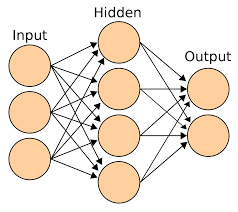Leadership Lessons from AI: Insights for the Modern Leader
Written on
Chapter 1: The Intersection of AI and Leadership
My journey with Artificial Intelligence (AI) began several decades ago, during the era of the Netscape browser—a time that now feels primitive in the fast-paced world of technology. For those who recall, it was a foundational period in the internet's evolution.
The AI model I initially engaged with was the Multi-Layer Perceptron (MLP), a type of Artificial Neural Network (ANN). This context is provided for those with a technical background. Training AI back then was an arduous task, often bordering on the unimaginable for those unfamiliar with it.
To develop an ANN, one had to meticulously code every aspect of its functionality, layer by layer and node by node. (I admit, I did make use of arrays and loops, which simplified the process.) Each model had to be programmed to learn in a way that would gradually align its outputs with desired results. This involved gathering data from various sources, including public databases and peers, preprocessing it, and translating it into a comprehensible format for human users.
In contrast, today's researchers have access to an enormous volume of data online. By leveraging Python libraries like TensorFlow, Keras, PyTorch, and Scikit-learn, along with visualization tools such as Matplotlib, one can rapidly prototype AI models with impressive capabilities.
Reflecting on my path, I realize that while I did not pursue a career in AI—largely because the field was still maturing, focusing mainly on academia and niche applications like stock trading—the principles I learned have been invaluable in shaping my leadership style.
Throughout my career, I have drawn parallels between AI's learning processes and effective leadership practices. Below, I outline some key insights derived from AI principles that can enhance leadership abilities.
How AI Learns
To explain AI learning without reiterating the extensive coverage by others, I'll simplify the concepts. A neural network mimics the brain's structure and consists of three primary layers: Input, Hidden (Processing), and Output.
Each layer contains nodes that process incoming information. The following illustration captures this model effectively:

Input Layer: This layer acts like our senses, absorbing information from the environment. For instance, it processes pixels from an image or notes from a piece of music. The challenge here lies in determining the optimal number of inputs for the AI to learn effectively.
Hidden Layer: This layer is where processing occurs. It identifies patterns and relationships within the data, improving its understanding with more layers. The complexity of this layer is akin to deciphering the human brain—intriguing yet somewhat enigmatic.
Output Layer: Similar to human decision-making, this layer determines the AI's conclusions based on what it has learned. For example, it might assess an image and state, "This is 70% likely to be a chihuahua and 99% likely to be a dog," relying on its training experiences.

For AI to learn, it requires both input and the expected outcomes. Unlike traditional programming, which follows a linear logic path, AI adapts and evolves through exposure to vast amounts of training data, refining its model based on the connections it establishes.
As an example, consider the following:
If 1 # 1 results in 2, and 2 # 2 results in 4, what does # signify?
Through its training, AI deduces that # likely represents the addition operator. When asked for the result of 3 # 3, it confidently answers 6. However, if new information reveals that 3 # 3 equals 9, the AI updates its understanding accordingly, evolving its model to reflect this new reality.
The more data it processes, the better its ability to generalize and understand different scenarios.
Real-World Applications
The previous example simplifies AI's learning capabilities. These principles extend into various fields, including:
- Character and Pattern Recognition: Here, input includes pixel data, stroke characteristics, and handwriting speed. The output is the recognized character or image.
- Stock Trading: Inputs consist of stock prices, trading volume, and technical indicators, while outputs might involve buy/sell signals or trend patterns.
- Speech Recognition: The AI analyzes frequency and pitch to recognize spoken words, ultimately forming coherent sentences.
Leadership Insights from AI
Similar to AI, leadership cannot be rigidly programmed; every leader possesses unique qualities. However, we can identify common attributes that contribute to effective leadership, paralleling the traits of a solid AI model:
- Accuracy: A proficient AI model provides accurate predictions based on input data, just as effective leaders make informed decisions grounded in a thorough understanding of their team and environment.
- Generalization: A robust AI model can adapt its skills to new situations, akin to leaders who modify their approach based on varying challenges and team dynamics.
- Efficiency: An efficient AI model processes data swiftly and resourcefully, mirroring leaders who adeptly manage time and organizational resources to maximize productivity.
- Robustness: A resilient AI model withstands uncertainties and variations in data. Similarly, strong leaders maintain composure during challenges, inspiring confidence in their teams.
- Transparency: Ethical leaders prioritize clear communication regarding their decision-making processes, fostering trust within their teams.
- Scalability: Successful leaders adapt their strategies to fit the organization's growth and complexity, akin to an AI model capable of handling large datasets.
- Ethical Considerations: Exceptional leaders uphold fairness and accountability, promoting an inclusive and ethical workplace culture.
- Resilience: Just as AI models correct their behavior based on new data, effective leaders learn from their failures, demonstrating resilience and adaptability to their teams.
Embracing Failure as a Stepping Stone
Ultimately, both effective AI models and successful leaders recognize the value of failure as a learning opportunity. Allowing individuals to fail, learn, and grow fosters a culture of innovation and long-term success.
As I continue to explore AI-related insights, I invite you to engage in this journey.

If this content resonates with you, please show your support with claps or comments, encouraging me to share more ideas regularly. Wishing you a wonderful day!
Chapter 2: Leadership in the Age of AI
Understanding the evolving landscape of leadership in relation to AI is crucial.
This video discusses the essential skills leaders need in the AI era.
Chapter 3: Essential Skills for Leaders in the AI Era
In this section, we explore the key skills every leader must possess to thrive in today's AI-driven landscape.
This video highlights the fundamental skills necessary for effective leadership in the age of AI.